MANUSCRIPTS:
Saint Benedict – La Regle Saint Benoit (ELIMINATED IN ROUND 1)
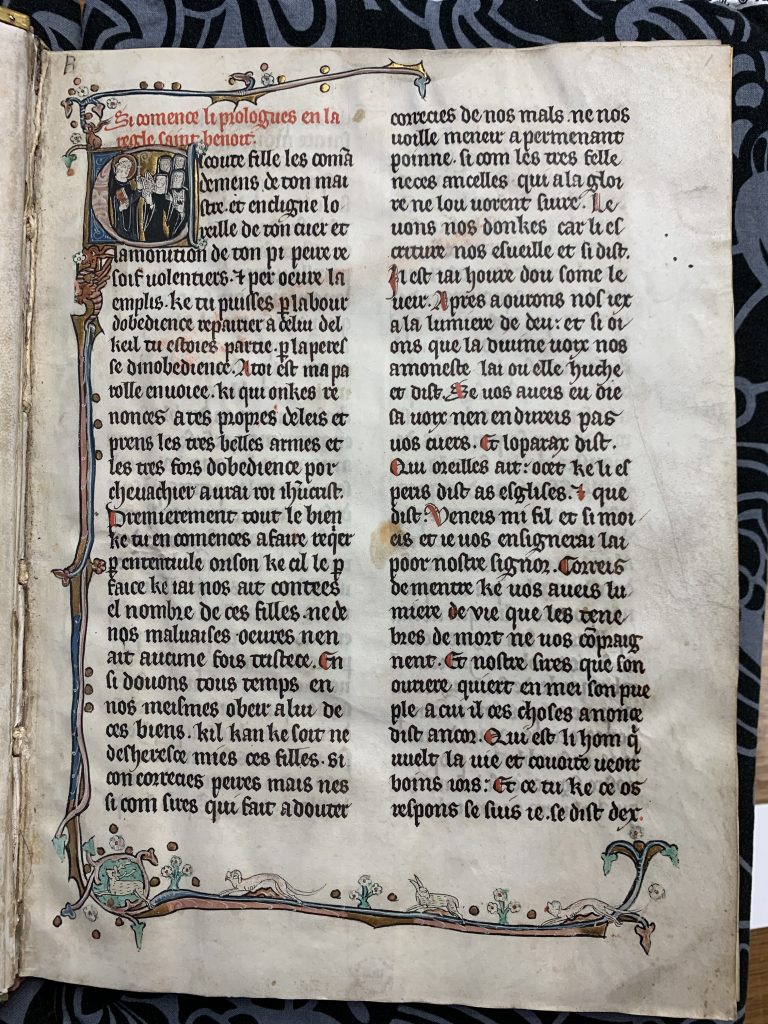
La regle saint Benoit or, The Rule of Saint Benedict, is a 13th century manuscript that laid out the rules of interaction between inhabitants of monasteries. This particular copy is especially important because it is almost certainly written for a female Benedictine community. The historiated initial on the first page depicts Saint Benedict preaching to a group of nuns and there are vows from a 15th century nun pasted onto one of the pages.
Catholic Church – Book of Hours: Sarum Use
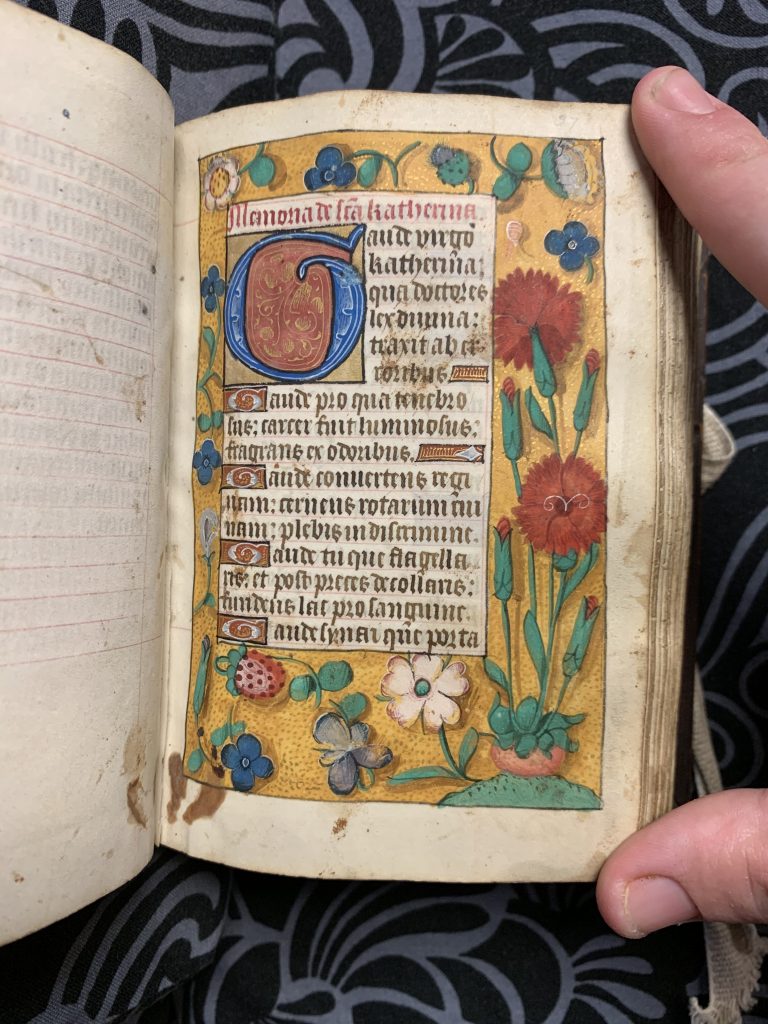
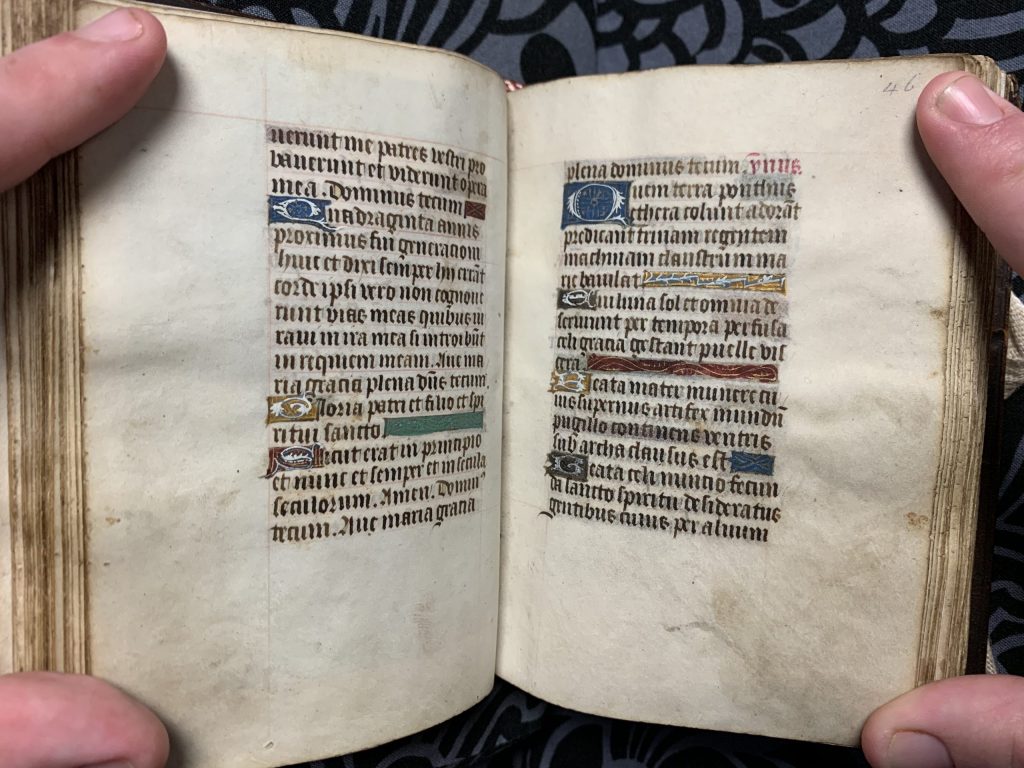
Books of Hours are devotional texts that were owned by individuals, predominantly women, who wanted a more devout approach to their daily worship. The text was modeled after the monastic lifestyle and contained liturgical readings for each of the canonical hours. This particular example features the Sarum Use as well as beautiful illuminations and illustrations. It is written in a Gothic book hand and includes decorated borders with flowers and leaves, illuminated initials, and vibrant yellows, reds, and greens.
Crafte of Conjureynge and Howe to Rule the Ffierye Spiritts of Ye Planetts & Make The Devyle Appearre
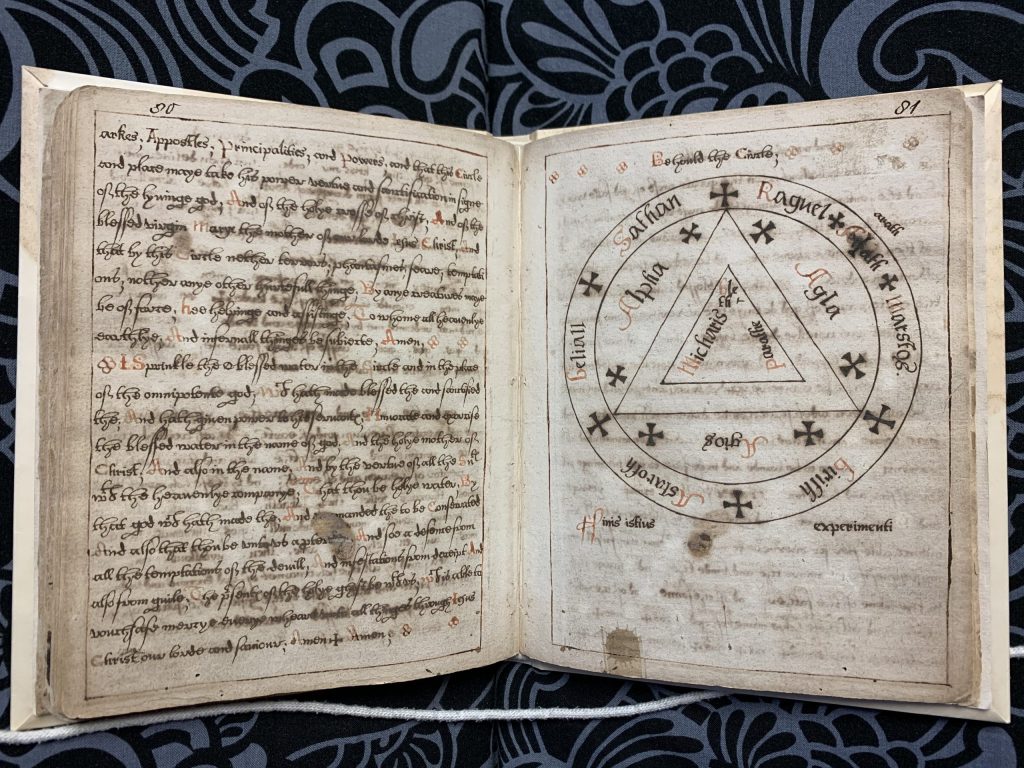
Crafte Of Conjureynge… is a manuscript from the late 16th century that features seven diagrams drawn in ink – consisting mostly of pentagrams and circles. This text is particularly interesting because it discusses astrological material, but it also mentions Christian saints and Jesus Christ. It provides a fascinating glimpse of spirituality and magic in conversation with Christian topics.
Ernest Rinzi – Journal of Ernest Rinzi, 1898-1903 (ELIMINATED IN ROUND 1)
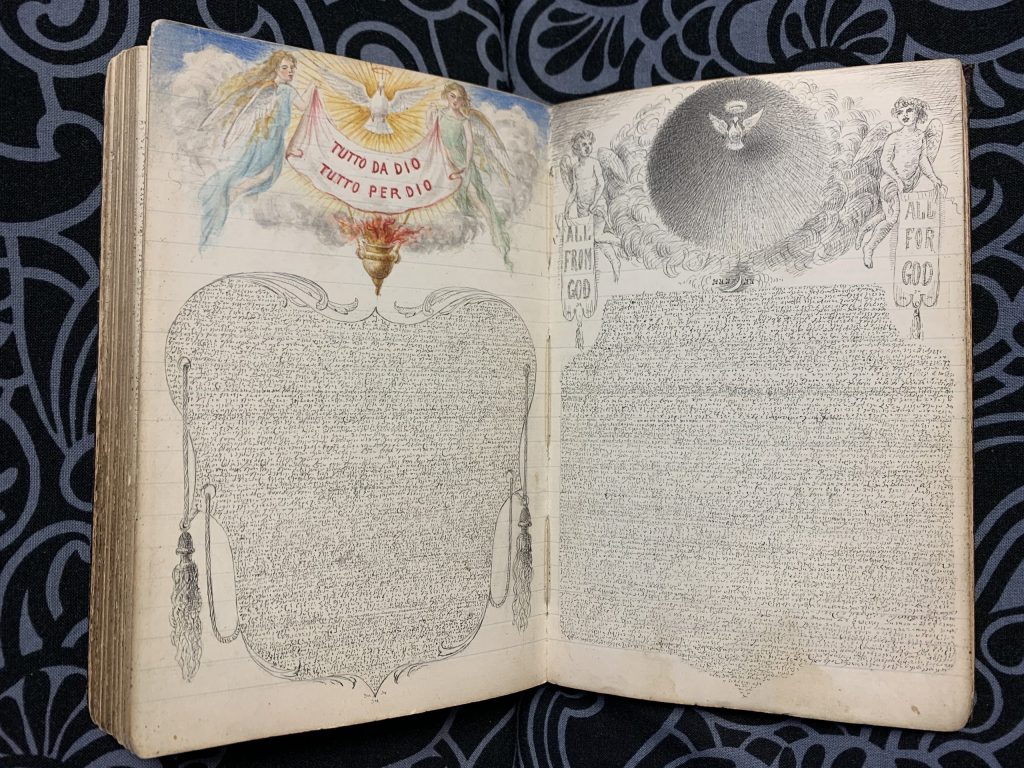
Written in the years 1898-1903, the journal of Ernest Rinzi is not your usual journal. Rinzi was a miniaturist and jeweler, and was a member of the Society of Miniature Painters. He put his miniature skills to the test in this journal, writing so small that a magnifying glass is needed to see the writing clearly. If the size didn’t make the journal difficult enough to read, the journal is written in a code invented by Rinzi himself. The code appears to blend Greek letters, signs borrowed from Chinese characters or from astrology, and some of his own unique inventions. Some of the larger text in the journal has been cracked, but a majority of the journal, written in miniature characters, is still unknown.
Thank you to Ruthann Miller for her contributions!